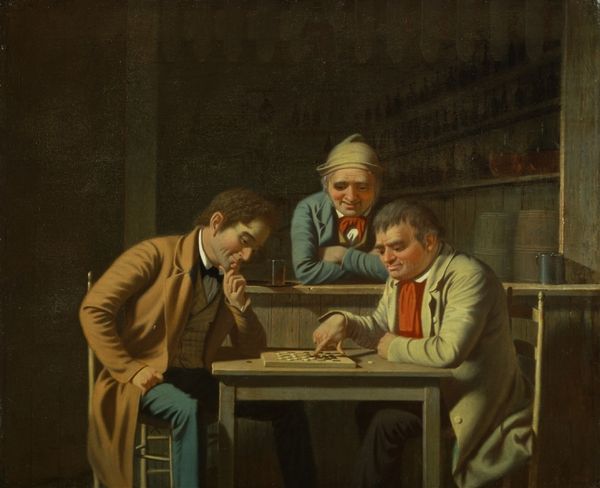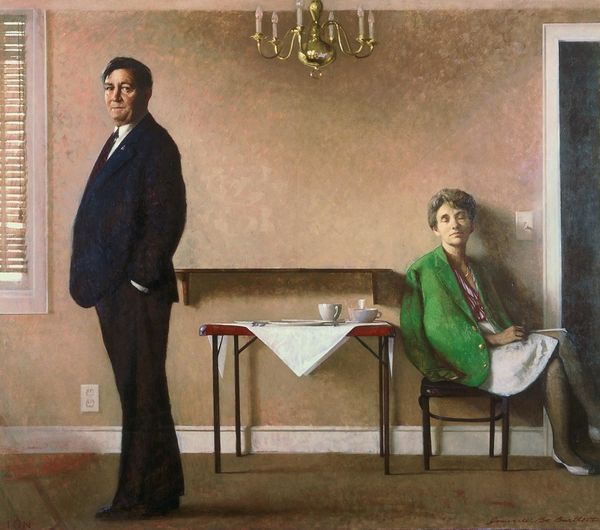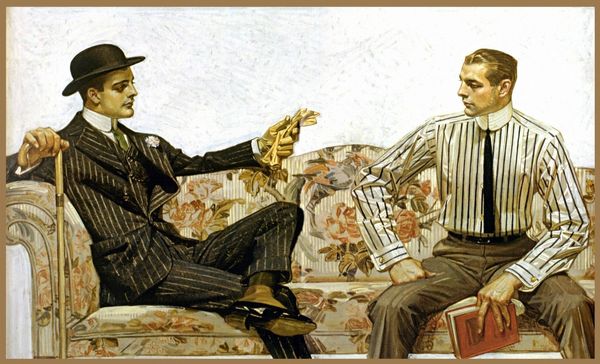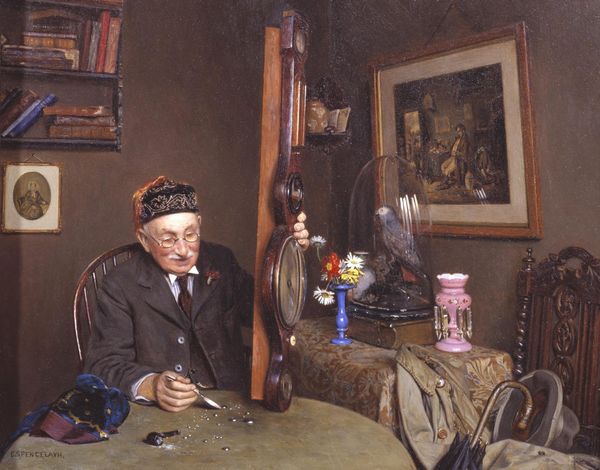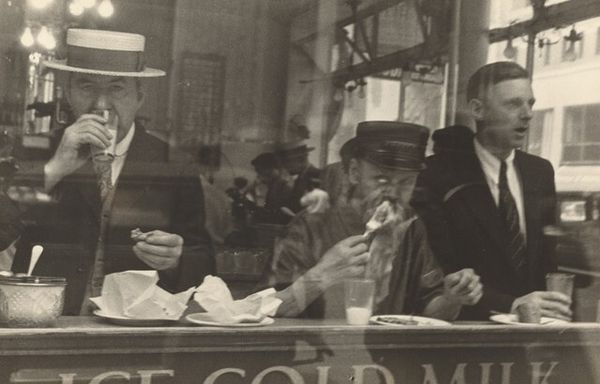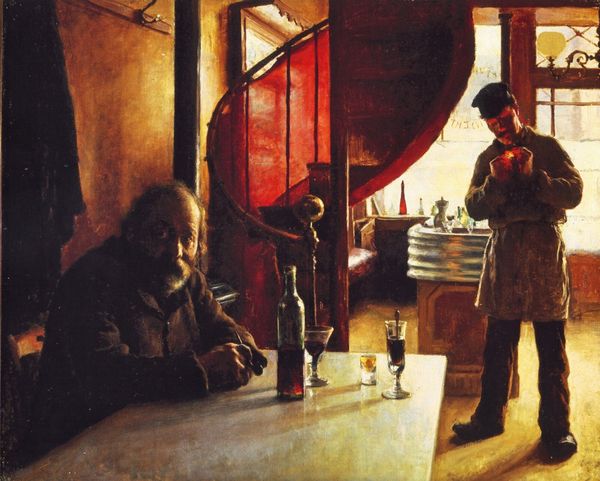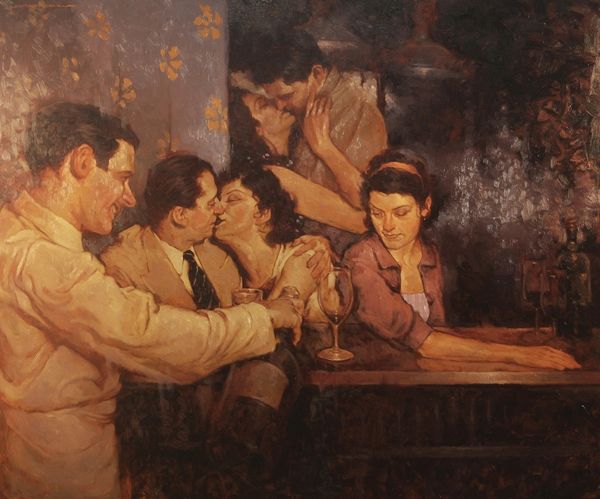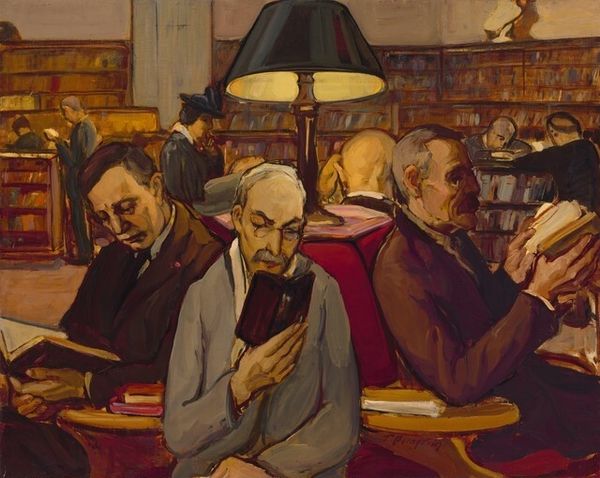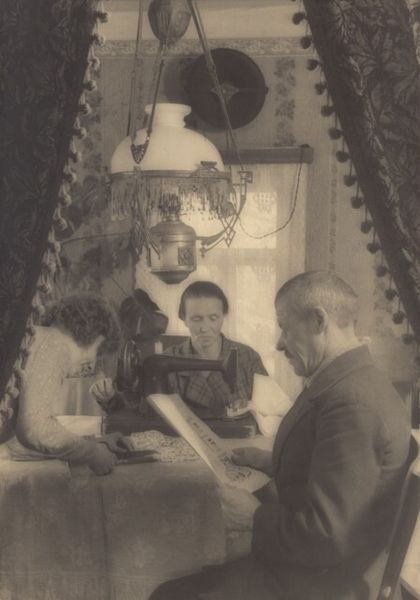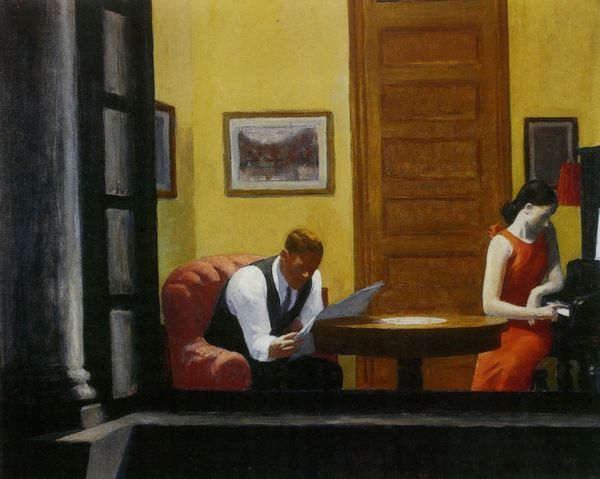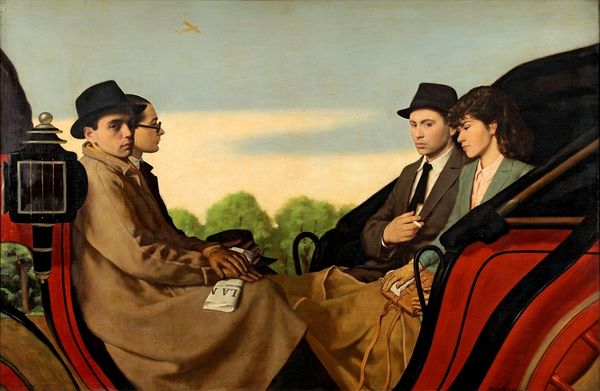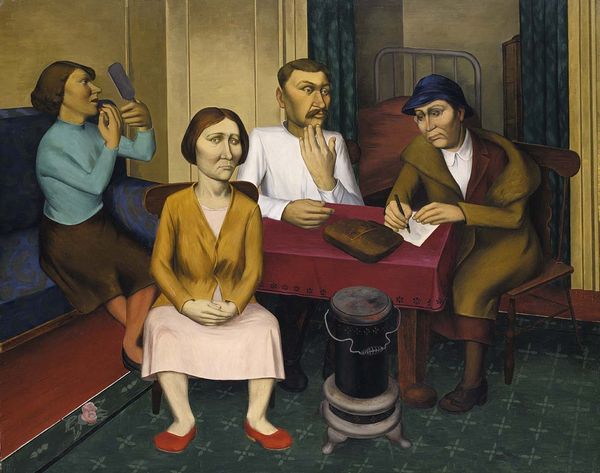
painting, oil-paint
#
portrait
#
self-portrait
#
painting
#
oil-paint
#
genre-painting
#
modernism
#
realism
Copyright: Antonio Bueno,Fair Use
Editor: Here we have Antonio Bueno's "Double Self-portrait," created in 1944 using oil paint. The striking duality in this piece—one figure seemingly the artist, the other more of a bohemian—immediately grabs you. What stands out to you compositionally? Curator: Intriguing. The composition presents a clear binary. Notice how the painting is divided almost perfectly in half, the table acting as a strong horizontal. This division underscores the contrast in the subjects themselves, setting up a dialectic between artist and figure, creator and contemplator. Observe, too, the differing light qualities – cooler on the left, warmer on the right – which reinforces this divergence. Editor: So you're seeing this as a conversation of opposites mainly through the visual language of the piece? What about the objects on the table? Curator: Precisely. And consider the objects: art supplies versus smoking implements and fruit. Are these merely props, or do they signify deeper symbolic contrasts within the artist’s self? Ask yourself how the carefully arranged items, almost still-life-esque, contribute to the overall structure. Each element performs a function within the broader visual architecture. The newspaper clipping, the photograph on the wall... do they serve to further clarify or further obfuscate any implied meaning? Editor: I never would have considered it in that analytical detail. So by focusing on the placement and lighting, we're getting at a possible intent about the artist's internal conflict? Curator: Potentially. It's a structure of feeling made visible. What emerges, at least to me, is not necessarily conflict, but rather an artist attempting to categorize his essence, dissecting his artistic and personal identities for closer scrutiny using a structured symbolic language. Editor: Well, thank you for pointing out how I can delve deeper just by carefully examining the arrangement and the artist's choices; it’s far more intricate than what appears at first glance! Curator: Indeed. Close visual reading opens up many avenues for understanding.
Comments
No comments
Be the first to comment and join the conversation on the ultimate creative platform.
